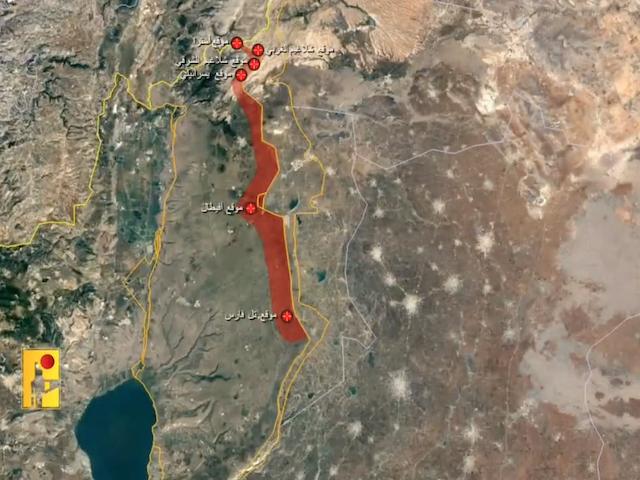In a bold and brazen move, the Hezbollah terror group has released a new propaganda video, showcasing drone footage of Israeli military bases in the Golan Heights. This provocative act is designed to sow fear and uncertainty, as the video ominously concludes with a glimpse of an Israeli city, which Hezbollah claims will feature in an upcoming clip.
A Growing Threat
Just weeks ago, Hezbollah disseminated a similar video, highlighting Israeli sites in the Haifa area. The Israeli Defense Forces (IDF) have yet to comment on the footage, leaving questions about the video's timing and context unanswered. This latest release underscores Hezbollah's growing use of drones in its conflict with Israel, employing them for both surveillance and attacks. Many of these drones are laden with explosives, posing a significant threat to Israeli security.
🚨🇱🇧🇮🇱HEZBOLLAH RELEASES DRONE VIDEO OF ISRAELI MILITARY SITES
— Mario Nawfal (@MarioNawfal) July 9, 2024
The detailed footage shows Israeli military bases in the Golan Heights and an Israeli city, which Hezbollah says will be featured in an upcoming clip.
The video appears to show Camp Jordan, Camp Tsenover, the Sling… pic.twitter.com/r8bz0zbW1I
On Sunday, Hezbollah escalated its aggression with a drone attack on Mount Hermon in the Golan Heights, a key Israeli surveillance center. This attack marks the first bombing since Hezbollah began exchanging fire with Israel on October 8, following the deadly assault by its Palestinian ally, Hamas, in southern Israel. The Gaza war, ignited by this attack, has seen Hezbollah vowing to continue its operations until the conflict ceases.
Strategic Importance of Mount Hermon
Mount Hermon holds immense strategic value for Israel, hosting critical surveillance, espionage, and air defense installations. Overlooking the Syrian capital, the mountain provides Israel with the ability to monitor activities across Syria, Iraq, Jordan, and parts of Saudi Arabia. Israel secured control of Mount Hermon from Syria during the 1973 Yom Kippur War, and it has since remained a pivotal asset in Israel's defense infrastructure.
📰 via @Reuters:
— FDD's Iran Program (@FDD_Iran) July 8, 2024
The Iranian-backed Hezbollah militant group said on Sunday it launched a drone attack on Mount Hermon in the Israeli-occupied Syrian Golan Heights where Israel has a key surveillance centre. https://t.co/7EAWW3hecn
Hezbollah's Escalation and Tactics
The conflict between the Iran-backed Hezbollah and Israel has been gradually intensifying, raising fears of a full-scale war. Both sides, along with international diplomats, are working to prevent such an escalation, despite the ongoing provocations. Hezbollah has ramped up its attacks, deploying larger numbers of explosive drones, utilizing new types of rockets, and even claiming to have targeted Israeli warplanes. However, the Israeli Air Force has reported no hits from Hezbollah's attacks.
Over the past eight months, Israel has successfully intercepted several Hezbollah drones, ensuring that no sensitive information was compromised. Nonetheless, Hezbollah's increasing aggression tests the unwritten rules that have kept the conflict largely confined to border areas since October, sparing major Lebanese and Israeli cities from the crossfire.
Violations of UN Resolution 1701
Hezbollah's actions are in clear violation of United Nations Security Council Resolution 1701, which mandates that the group withdraw behind the Litani River, leaving southern Lebanon under the control of the Lebanese Army and UNIFIL forces. Israel, in compliance with the same resolution, has remained behind the "Blue Line" since the end of the 2006 Lebanon War.
The Maronite Patriarch of Lebanon has just said that Lebanon should call on the UN Security Council to enforce international resolutions (UNSC 1701) to prevent terrorist groups, such as Hezbollah & Palestinian factions, from launching attacks from Lebanon pic.twitter.com/xMhgHXCH7h
— Visegrád 24 (@visegrad24) June 24, 2024
Israel's Response
Israel holds Iran-backed Hezbollah responsible for the surge in violence and remains steadfast in its commitment to restoring security along the border. The IDF has not yet responded to the latest Hezbollah strike, but Israel's determination to counter Hezbollah's threats and maintain its territorial integrity is unwavering.
As tensions continue to mount, the international community watches closely, hoping to avert a broader conflict. The delicate balance in the Golan Heights and beyond hangs in the balance, with the potential for further escalation ever-present.


